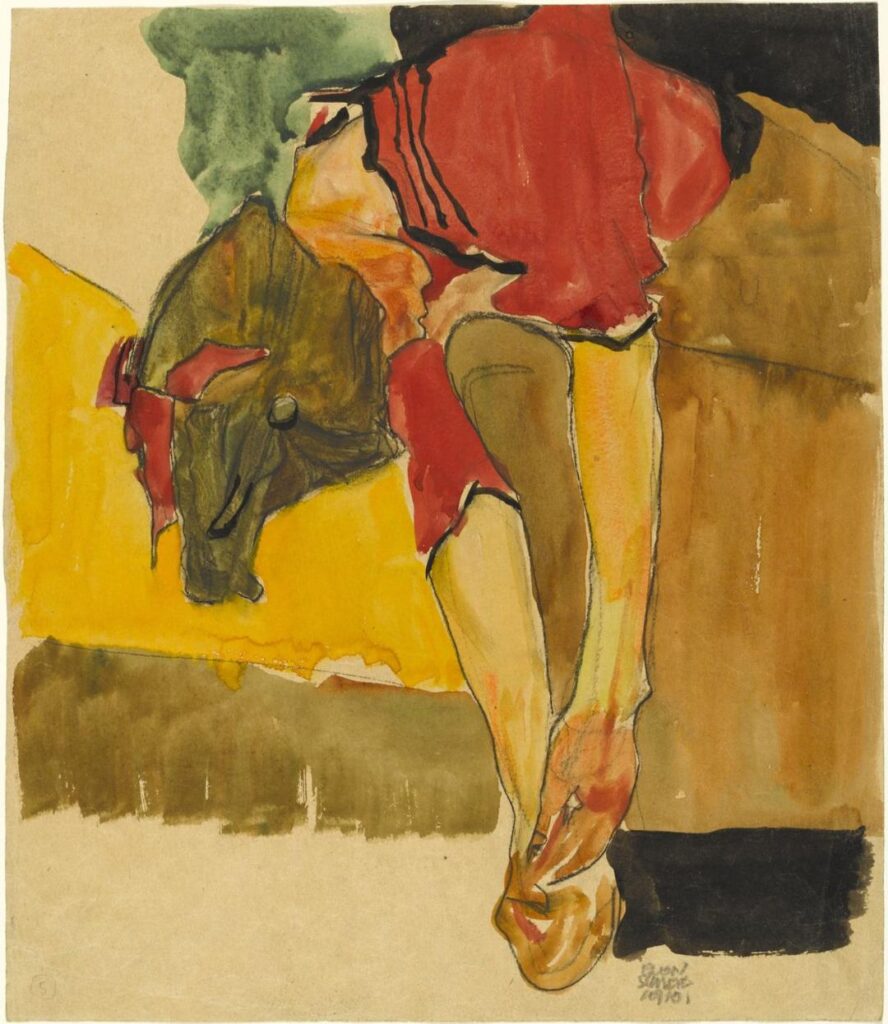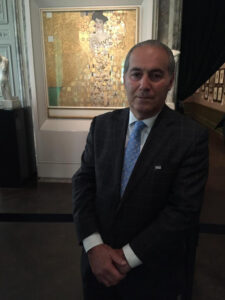|
Getting your Trinity Audio player ready...
|
By David Ben Hooren
Museums are often viewed as repositories of culture and history, showcasing the beauty and creativity of humanity. However, behind many works of art hanging on museum walls lies a dark history of theft, violence, and colonialism. Museums worldwide are grappling with the complex legacies of their collections, and in New York in 2022, a new law was passed that addresses one painful chapter of history: the Holocaust. Signed by Governor Kathy Hochul, this law mandates that the state’s museums acknowledge if a work of art in their possession was stolen by the Nazi regime. This legislation is part of a broader effort to honor and support Holocaust survivors and their families.
The Holocaust, with its atrocities committed by the Nazi regime during World War II, left an indelible scar on history. Among the many horrors of that time, the Nazis looted approximately 600,000 artworks from Jewish individuals and families. Sources indicate that the cumulative value of these stolen artworks total anywhere from $1 trillion to $5 trillion.

Case in point: In June 2006, the New York Times reported that a 1907 portrait by Gustav Klimt was purchased for the Neue Galerie in Manhattan by the cosmetics magnate Ronald S. Lauder for $135 million, the highest sum ever paid for a painting.
“The portrait, of Adele Bloch-Bauer, the wife of a Jewish sugar industrialist and the hostess of a prominent Vienna salon, is considered one of the artist’s masterpieces. For years, it was the focus of a restitution battle between the Austrian government and a niece of Mrs. Bloch-Bauer who argued that it was seized along with four other Klimt paintings by the Nazis during World War II,” the NYT reported back in 2006.
One can only conclude that if only one piece of Nazi looted art is worth $135 million, then one can only imagine what the total sum would be for 600,000 pieces of art.
Decades later, the legacy of these thefts continues to reverberate in the lives of survivors and their descendants, many of whom have not regained possession of their lost treasures.
The issue of Nazi-looted art extends far beyond New York and is a global concern. Advocates for Holocaust survivors have long called for art institutions worldwide to take more proactive measures in identifying the rightful owners of looted artworks in their collections. While some progress has been made, challenges persist.
The Washington Principles, signed by 44 countries in 1998, established international guidelines for the return of Nazi-looted art. Countries like Austria and Germany have returned tens of thousands of stolen items in accordance with these principles. However, the process of identifying rightful owners and returning looted art can be slow, complicated, and sometimes unresolved, particularly when art is swept up in the chaos of war or political instability.
Advocates for Holocaust survivors have long been calling on art institutions to do better. In 2018, the Louvre opened an exhibition of art stolen by Nazis, claiming that the goal was to find the works’ rightful owners. But restitution scholar Marc Masurovsky told the Washington Post’s James McAuley that these efforts were “far too little, far too late.” The museum, he said, should be more proactive about identifying the rightful owners of the works in its collections—a vital step in restitution that museums around the world struggle with.

“Uncovering the provenance of a piece … can be slow work that sometimes never reaches resolution,” wrote Jackie Mansky for Smithsonian magazine in 2017.
Restitution battles have seen both victories and setbacks in recent years. French museums returned 15 Nazi-looted artworks to Jewish families in early 2022, demonstrating progress in addressing historical injustices. However, challenges remain, with some European nations largely ignoring or inadequately implementing the Washington Principles.
The new law, however, does not address the issue of restitution. Restitution disputes involving artworks have been a contentious issue in the state, with cases involving prominent museums like the Museum of Modern Art (MoMA) and the Metropolitan Museum of Art.
Moreover, the law focuses primarily on Nazi-looted art from Europe and does not acknowledge art stolen from non-European countries. This limitation has raised questions about the law’s scope and its potential to address the broader global issue of stolen art.
As of now, several prominent New York museums, including the Met, the Whitney Museum of American Art, MoMA, the Guggenheim, and the Brooklyn Museum, have not released information on how they plan to comply with the new law’s requirements.
The long and short of it is that art museums around the globe, with very few exceptions, have artwork within their walls that was expropriated by illegal means and the time is long overdue for justice to prevail after eight long decades since the conclusion of World War II.
Such museums in New York as the Museum of Modern Art and the Morgan Library & Museum were recently called upon to return artwork to descendants of Jewish collectors as well as the Santa Barbara Museum of Art in California and others. Moreover, Nazi looted art also remains in public art galleries and private collections.
Legislation must also be enacted in such countries as Israel and in Germany. Looted art can be found in the most surprising venues and Israel is no exception. The possibility exists that Nazi looted art made its way to their exhibit spaces and as such, thorough investigations need to become a priority.
In Europe, art museums throughout the length and breadth of the continent possess art work and other cultural and historic items that landed up in their hands through outright theft and other shady practices.
Let it be known that the worst offender is Germany for in their art museums can be found troves of Nazi looted art and pieces that were obtained through less than honest means as has been recorded by the media.
To that end, the Jewish Voice made the decision to create a task force whose exclusive agenda will be to scour art museums around the world and launch thorough investigations as a way of discovering the whereabouts of these art works as they are matched up with the descendants of their original owners; the majority of whom are Jewish.
The creation of a highly effective and professional task force takes a while to build from the ground up and more importantly it requires adequate funding.
As such, the Jewish Voice is calling upon renowned philanthropists who deeply care about seeing justice meted out in this matter to step up to the plate and help fund this task force.

We are calling upon such generous contributors to noble causes as former New York City Michael Bloomberg, Wall Street titan Ira Rennert, hedge fund manager, Michael Steinhardt, Tulsa oil magnates Lynn and Stacy Schusterman, World Jewish Congress President Ronald Lauder, Microsoft CEO Steve Ballmer, Dell Computer founder Michael Dell, casino magnate Miriam Adelson, Victoria’s Secret founder Leslie Wexner, Home Depot founder Bernie Marcus, New England Patriots owner Robert Kraft, Judaica collector Jay Schottenstein, film director Steven Spielberg, co-founder of Birthright Israel, Charles Bronfman, art collector Audrey Irmas, chairman of the board of the Tikvah Fund, Roger Hertog, real estate investor Adam Milstein and others to give serious consideration to donating generously to the Jewish Voce task force on restitution of Nazi looted art.
As the sands of time move more rapidly than we would like, reality dictates that time is slipping away. This project must be established now in order to achieve the kind of restitution of Nazi looted art that descendants of Jewish owners have waited for way too long. Correcting a colossal injustice does not occur overnight but with the assistance of those who care, this can and will be accomplished.




